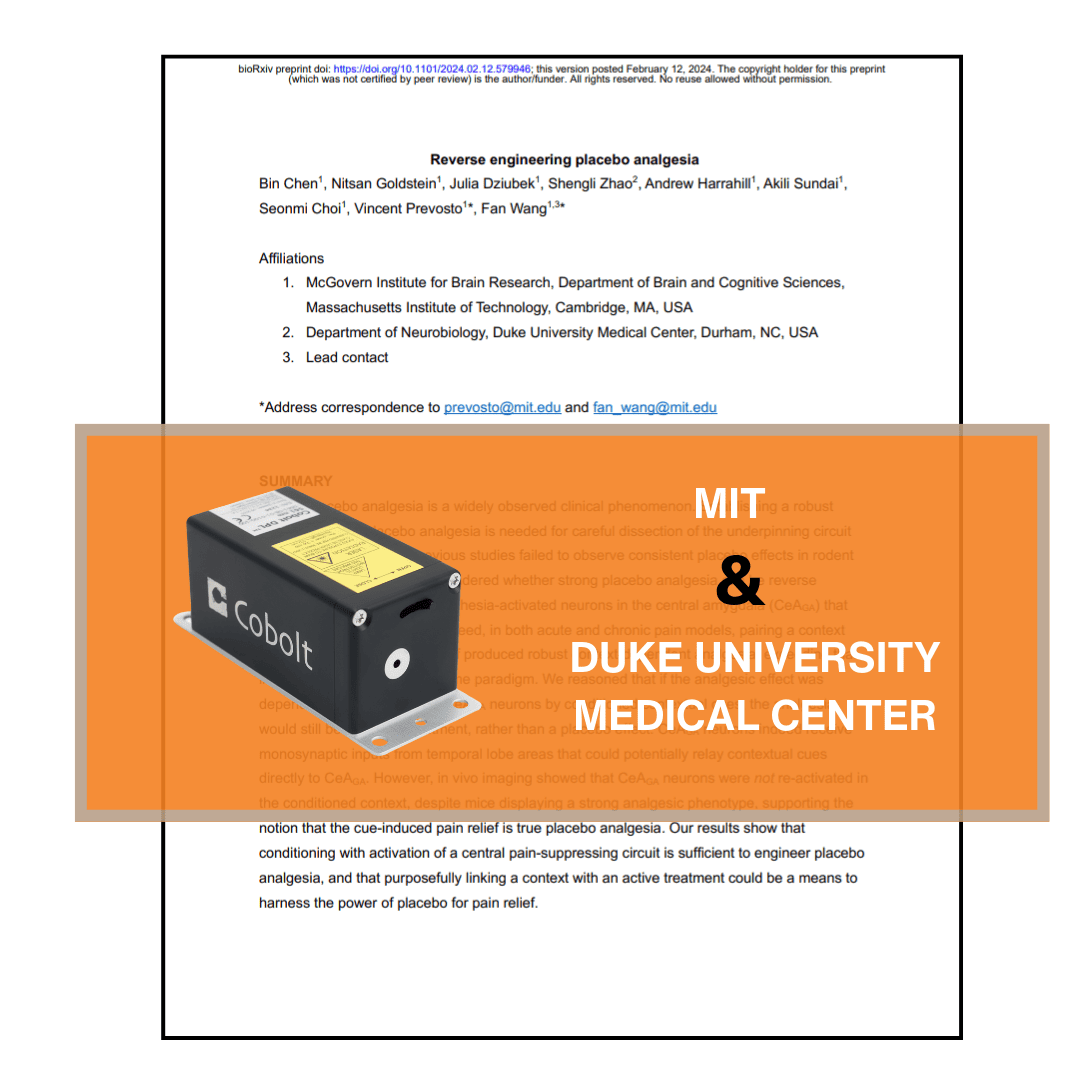Reverse engineering placebo analgesia
Researchers from MIT (McGovern Institute for Brain Research, Department of Brain and Cognitive Sciences) and Duke University Medical Center (Department of Neurobiology), have successfully reverse-engineered placebo analgesia by activating specific neurons in the central amygdala (CeA) of mice. This innovative approach has shown to produce robust pain relief in both acute and chronic pain models, surpassing the effects of morphine.
The study established a reliable mouse model of placebo analgesia by pairing a context with CeA neuron activation, leading to significant pain relief. The analgesic effect was achieved without reactivation of CeA neurons in the conditioned context, confirming it as true placebo analgesia.
For the in vivo optogenetic experiment the researchers use Cobolt laser at 473 nm and 633 nm.
This method could potentially harness the power of placebo for pain relief in clinical settings, reducing medication intake and side effects.
More resources
Looking for more in-depth information? Visit our Knowledge Bank page for detailed articles and insights on our products and technologies.


